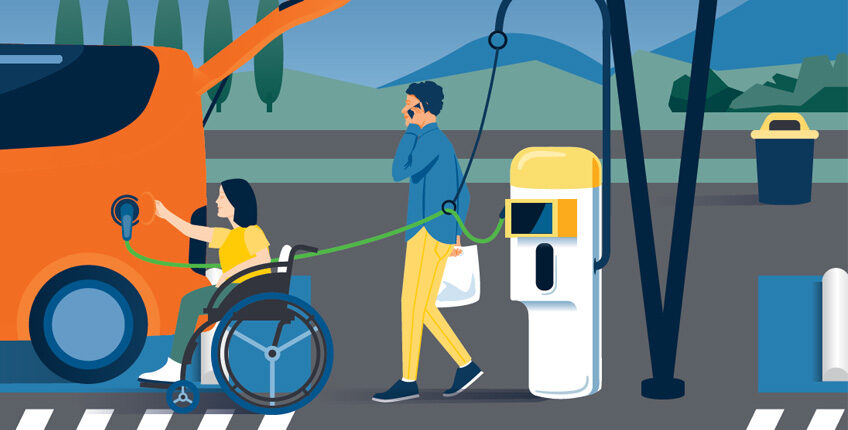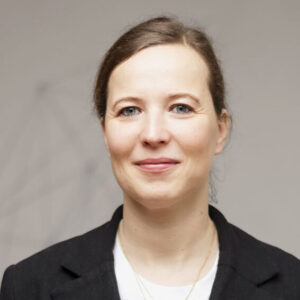On behalf of the Federal Ministry for Digital and Transport (BMDV – Bundesministerium für Digitales und Verkehr), the National Centre for Charging Infrastructure (Nationale Leitstelle Ladeinfrastruktur) under the umbrella of the federally owned NOW GmbH is today publishing the new guideline entitled “Easy charging without barriers: Requirements for barrier-free charging infrastructure” (“Einfach Laden ohne Hindernisse: Anforderungen an barrierefreie Ladeinfrastruktur”).
The guideline was developed together with the Sozialhelden e.V. (Social Heroes) association and shows how the charging of electric cars can be made barrier-free. The guideline outlines the requirements for a barrier-free charging facility and its setting. In this way, people with disabilities in particular should have equal access to electric mobility.
On the one hand, the guideline is conceived to provide orientation for users in the field of barrier-free charging infrastructure. On the other hand, it also serves as a basis for a standardisation process that will take place within the framework of the German Institute for Standardisation (DIN) with the broad participation of relevant stakeholders.
Download the guideline „Einfach laden ohne Hindernisse“ (PDF, in German)
Johannes Pallasch, Spokesperson of the National Centre for Charging Infrastructure management team: “Charging infrastructure must first and foremost be oriented towards the needs of the users. For us, this also means that it must not exclude anyone. With the new guideline, we show how charging can be designed to be as barrier-free as possible. After all, people with disabilities should also be able to access electric mobility and the associated charging infrastructure in Germany conveniently, comfortably and safely. I am pleased that with this guideline, which was commissioned by the BMDV, we are taking a decisive step towards ensuring more barrier-free charging infrastructure.”
Raúl Krauthausen, Founder and Chair of the Sozialhelden e.V. association and inclusion activist: “The fact that the guideline also defines requirements for blind people shows that this important infrastructure project has succeeded in thinking barrier-free mobility beyond the curb. However, a guideline alone does not make the infrastructure barrier-free. That is why it is now important that cities and municipalities as well as manufacturers and operators implement the requirements.”
As part of the development of the guide, a market survey was first conducted of existing products as well as current regulations or those in preparation with regard to accessibility and e-mobility. This was followed by a focus group survey of people with different disabilities as well as on-site tests with a view to the entire process when charging – from locating charging infrastructure to the payment procedure and attempts to contact the service hotlines. In addition, qualitative interviews regarding individual needs and an online survey were conducted. Relevant stakeholders such as charging infrastructure operators and manufacturers were included in workshops. The DIN 18040-3 standard, which addresses barrier-free construction in public transport and open spaces, served as the basis for the development of the technical requirements. Its requirements are already taken into account in the BMDV’s funding programmes for publicly accessible charging infrastructure and in the tender for the Deutschlandnetz.
The publication of the “Easy Charging without Barriers” guideline also seeks to implement the “Charging Infrastructure Master Plan II”, which was adopted by the German federal cabinet in October 2022 as the federal government’s roadmap for the expansion of charging infrastructure. Measure 39 “Barrier-free access to the charging infrastructure” provides for the BMDV to develop technical requirements with the involvement of relevant stakeholders in order to also enable people with disabilities to use charging infrastructure.


